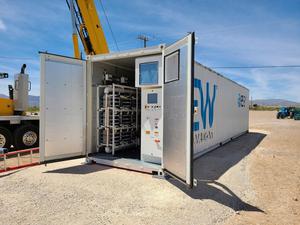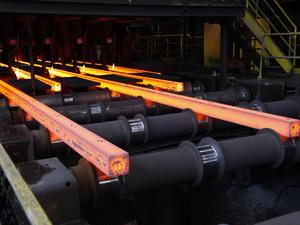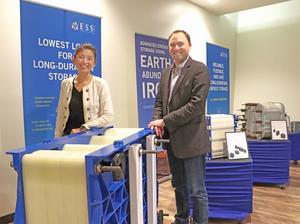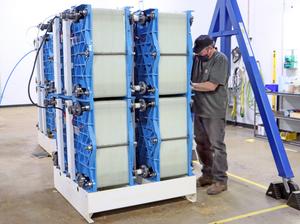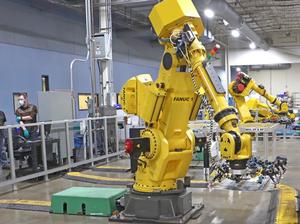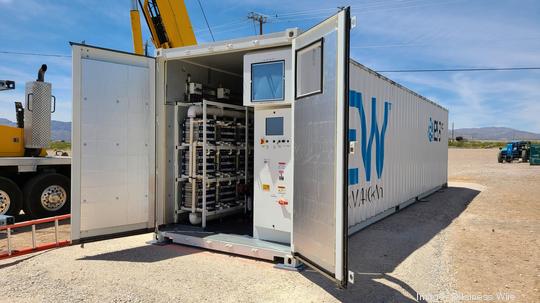
ESS dispatched two Energy Warehouse units in the year’s first quarter, following on a few earlier shipments. But the Wilsonville grid-scale energy storage company remained without revenue since going public last October.
In an earnings release and analyst conference call on Thursday, ESS (NYSE: GWH) cited “unanticipated challenges” to recognizing revenue for the units shipped.
That left analysts poking to understand the delay. ESS executives largely avoided specifics in response, beyond saying the terms of legacy contracts presented some issues.
More broadly, CEO Eric Dresselhuys said the company was taking steps to speed the process with a dedicated “delivery and customer success team” in the works.
“Our plan is for this team to engage with each customer early in the contracting phase to understand the deployment requirements and then work with them to manage onsite testing and commissioning,” he said. “We believe this team will be critical to ensuring our customers quickly realize the value of our solutions and in the process to accelerating our revenue recognition.”
ESS said it was slowed a bit by the supply-chain issues that are common these days but was diversifying its supplier partnerships and expects to ship 40 to 50 Energy Warehouses this year.
That would translate to $10 million in revenue, the company said, although it doesn’t expect all the sales to be recognized this year.
In investor presentations last year before it went public, ESS projected revenue of $37 million for 2022, with a leap to $300 million in 2023.
The company said it took delivery of its second semi-automated production line in the first quarter and expects to begin running its first fully automated line in the fourth quarter this year. That should leave it with 750 megawatt-hours per year of production capacity entering 2023.
Dresselhuys said broad trends were working in the company’s favor, particularly in Europe, where the need for energy storage is getting increased recognition. He also cited questions about the availability, safety and sustainability of lithium-ion batteries.
ESS makes a different type of energy-storage tool, called a flow battery, that relies on iron, salt and water in its electrolyte solution.
“We believe we are on track to be the most viable lithium alternative grid energy storage system available,” Dresselhuys said.
ESS netted $246 million in going public last year. It had $213.5 million in cash and cash equivalents on hand at the end of the first quarter, during which it reported $19.4 million in operating expenses.
“We currently have more than ample liquidity to run the business and expect to end the year with cash and cash equivalents well in excess of $120 million,” CFO Amir Moftakhar said.
ESS stock was up about 16% in early trading Friday, to $4.76.
ESS’s stock has struggled since it took the SPAC route to going public, like many such offerings. ESS opened at $8.60 after going public, shot up into the $20-plus range the next day, slid steadily to under $10 by early January, and then fell further amid general market declines. It had an all-time low close of $3.77 on Wednesday.
